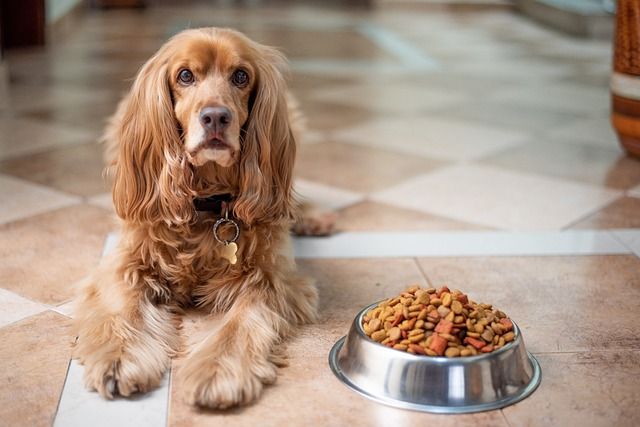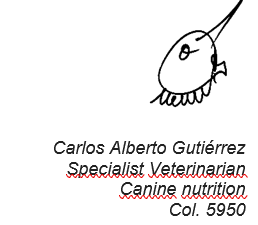
Would you eat a mediocre quality food 2 or 3 times a day, a food that comes in a bag that is only opened when it’s time to serve, and then closed knowing that the product won’t spoil because it is packed full of preservatives? And what if that’s all you ate day after day, without consuming anything other than that dreaded food?
I’m confident that 99% of people wouldn’t tolerate it! They would become depressed, stop eating, and only consume the bare minimum when they were truly hungry, even if the food was delicious.
However, the pet food industry has sold us the idea that if our dogs don’t eat their kibble and nothing else, they could suffer from “serious nutritional imbalances”.
The widespread use of kibble and processed pet food has only been around for the past 40 years, at least in Spanish-speaking countries. But what happened to dogs before then, for thousands of years? Did they disappear from the face of the earth due to “terrible” malnutrition?
While it’s true that nutrition has improved significantly, there are cases where homemade food (leftovers) can be so poor that I would prefer high-quality kibble instead. As a veterinarian exclusively dedicated to canine nutrition, my main duty is to ensure that dogs receive the best nutrition possible.
The best nutrition comes from well-made, homemade diets. I’m not saying that there aren’t high-quality processed foods available. My own dog eats homemade food, but when I go out of town and leave him with my neighbor to feed and take him for walks, I prepare high-quality processed food for him to eat twice a day.
I agree that there are certain high-quality processed foods available, but truth be told, homemade food will always surpass them, as long as it is well-made. Processed foods are dead foods, lacking in enzymes, vitamins, proteins, and other nutrients that are not present in their natural form. They are destroyed during the manufacturing process due to high temperatures and pressures, and are then added back in as nutrients at the end of the manufacturing process, with a coating of fat.
On the other hand, I have many clients who, due to convenience, lack of time, work schedules, as well as thousands of other constraints, prefer to give their pets processed food, even though making a homemade diet for a week doesn’t take more than an hour a week.
It’s my duty as a veterinarian to tell them that they are providing mediocre nutrition. How would they like to eat kibble and nothing but kibble, with the same taste and texture, for months on end? So far, no sensible person has said that they would. They say they love their dogs (or cats), that they are like their own kids, and that they “don’t mess around with their health”. Then why, after I explain the dangers of a diet exclusively based on kibble, do they continue to punish their pets in such a cruel way?
The issue of preservatives is especially relevant because, a few years ago, in 2007 there was a tragic incident due to pet food contamination that raised concerns about the safety of pet food and the use of preservatives in pet food products. The incident involved the presence of melamine in pet food ingredients that were sourced from China. Melamine is a toxic substance that can cause kidney failure and other serious health problems in both animals and humans. The exact number of deaths is difficult to determine, but it is estimated that hundreds, if not thousands, of pets died. There were also reports of at least three infants in China who died after consuming formula contaminated with melamine.
In this incident, it was discovered around 40% of the canned or dry foods contained sorbic acid, a preservative used to inhibit the growth of yeast and mold. Sorbic acid is known to cause allergic reactions in some dogs, and can also lead to digestive issues, such as vomiting and diarrhea. It is considered one of the worst ingredients for dog food.
In China, there are currently no specific laws or regulations that limit the amount of preservatives that can be used in pet food. This means that pet food manufacturers in China have more freedom to use preservatives as they see fit, which has led to concerns about the safety and quality of pet food products originating from China. It is worth noting, however, that some Chinese pet food manufacturers do follow international standards and best practices when it comes to producing pet food, and not all Chinese pet food is unsafe or low quality.
Click here and fill out the questionnaire if you want to start working together with us.
Regards


